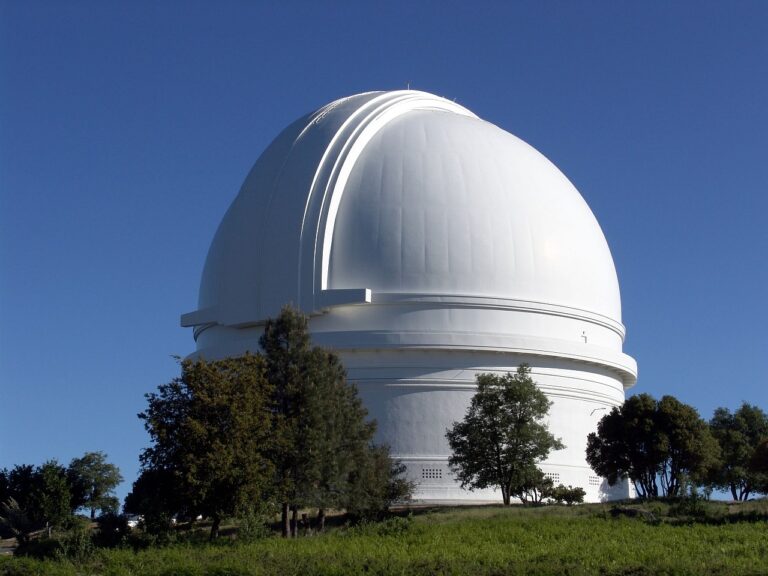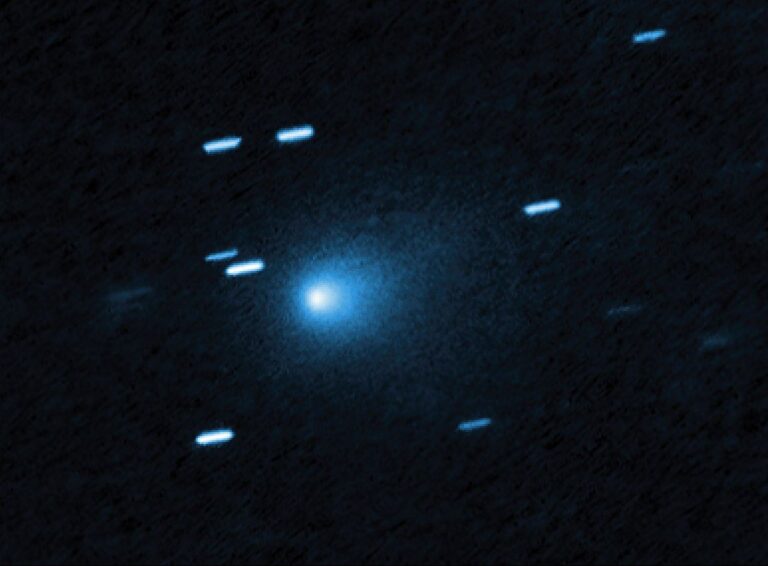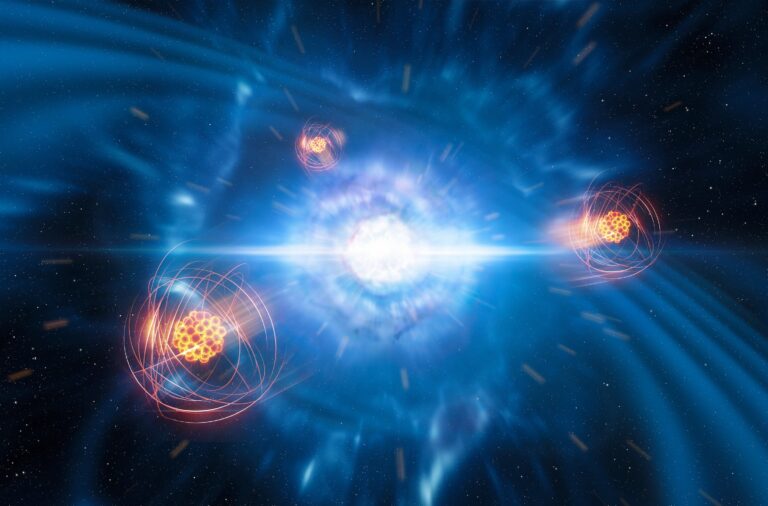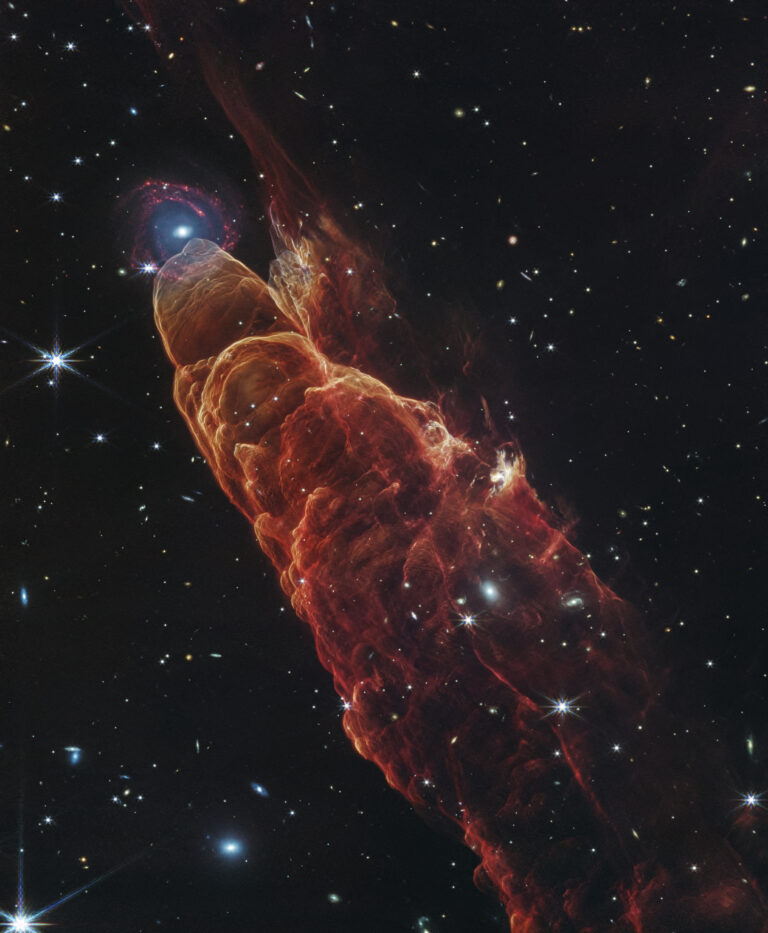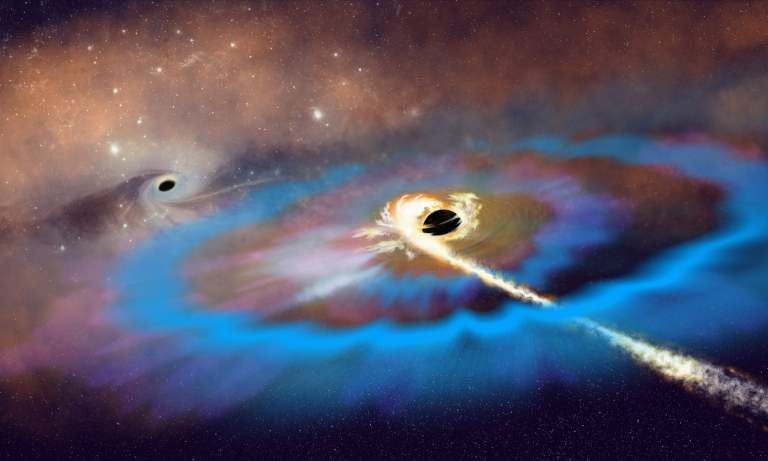Key Takeaways:
The sky is dominated by two seemingly perfect circles: the Sun and Moon. When safely behind the right amount of partially obscuring fog or low clouds, the Sun’s shape is obvious. Its equator’s tiny bulge throws it out of round by a mere 6 miles (9.66 kilometers) in its 864,337-mile (1,391,015km) width. If the Sun were modeled as a basketball, the difference between its equatorial and polar diameters would be half the width of a human hair. Circular perfection!
But perhaps this perfection is not unexpected. The sphere is the universe’s most common shape. Kids may wonder why stars never resemble cubes or diamonds. Answer: Every spot on a sphere lies the same distance from the center. A sphere also has the minimum surface area of any geometric shape. You’d use much more paint to cover a cube than to cover a ball of equal volume. So when a newborn star contracts from its own self-gravity, it pulls itself into the littlest form — always a sphere.
If the object spins quickly and its midsection bulges, it gets thrown out of the ball club. Through backyard telescopes, fast-spinning Jupiter and Saturn are clearly ovals.
But the Sun is different. Its slow rotation preserves its roundness. Our lethargic Moon, which has a similar spin of just under four weeks, differs from a perfect sphere by just 1.24 miles (2km). To the eye, the Full Moon is indistinguishable from a perfect disk. Ancient cultures, which revered the circle as nature’s supreme shape, never saw flawless spheres here on Earth. Only in the heavens was such perfection beheld.
Early astronomers watched the Moon’s flawless disk fully shift against the background stars in one hour. The Sun’s disk moved its diameter in one day. It was easy to be a circle groupie.
Our language retains this legacy with countless phrases like “inner circle” and the widespread use of “around.” And if something returns to where it started, like blood, we say it “circulates,” even if its path isn’t round. Early astronomers desperately wanted the planets to follow circular orbits to jibe with their belief that the realm “up there” was divine. They created complex mathematical systems of epicycles and deferents to circularly explain planetary motion. Dissention was not OK. Abandoning the circle usually brought a penalty that went beyond merely losing tenure.
“THE SPHERE IS THE UNIVERSE’S MOST COMMON SHAPE.”
Reality ultimately intruded. As it turned out, only Venus’ orbit would look circular to an alien studying it from a distance, with other planets displaying varying degrees of elliptical shapes. And fair enough: Ellipses rule if you’re a planet trying to maintain a stable orbit against the Sun’s pull. It’s easy to learn to love that shape.
Until a few months ago, astronomers assumed the most perfect spheres would be neutron stars, the nearest of which is a few hundred light-years away, not far from the North Star. Each of these ultra-heavy balls has a density equal to an entire freight train crushed down to the size of the period at the end of this sentence. As super-hard globes 12 miles (19.31km) wide, they’d be too dense to have bulges.
Then our secret admiration of circularity got a boost. Late last year, an international research team using the Kepler spacecraft announced finding the roundest-ever celestial object. Located 5,000 light-years away, it wasn’t a neutron star but a common type-A star resembling Vega and Altair, but with a strangely slow 100-day spin. Using a unique oscillation-detecting method, they announced that this star, with the catchy name KIC 11145123, has an equatorial diameter just 2 miles (3km) longer than its polar dimension. The researchers claim it’s the roundest thing in the universe.
But is it really? Have they forgotten about Mercury and Venus, located a million times closer to Earth? Thanks to the fact that someone forgot to wind up those innermost planets, slowing them to a crawl, they are perfectly round, like tires balanced by an obsessed mechanic. No bulges.
But unlike wedding rings and our other circle-shaped infatuations, Venus and Mercury appear telescopically round only in their “full” phase, when farthest away and hence smallest in apparent size. During this, they’re also behind the Sun, lost in solar glare. The one exception happened during the recent Venus transits, when we saw Venus’ perfect roundness as it glided in front of the Sun. Alas, when the next transit occurs in 2117, none of us will be around.
(Sorry about that. Really.)



